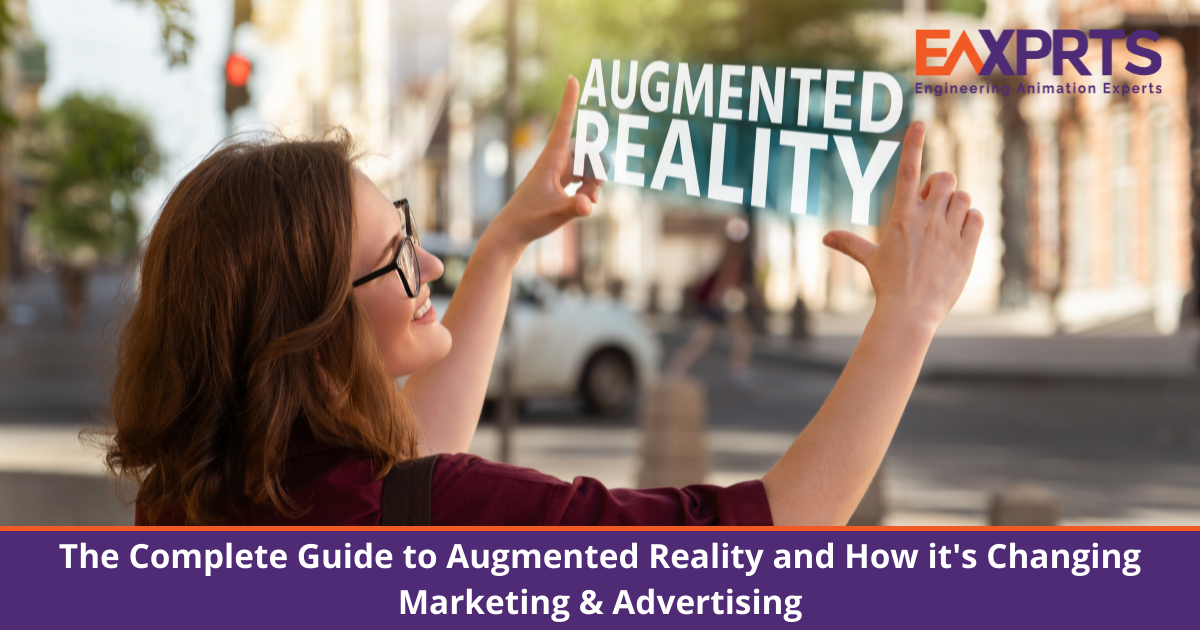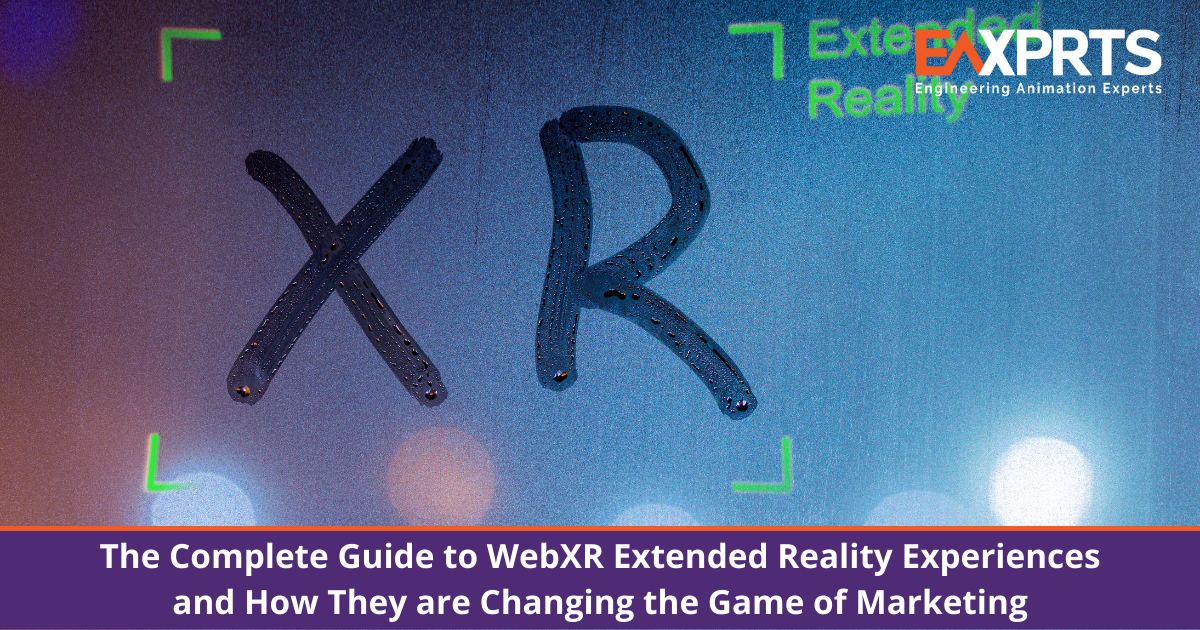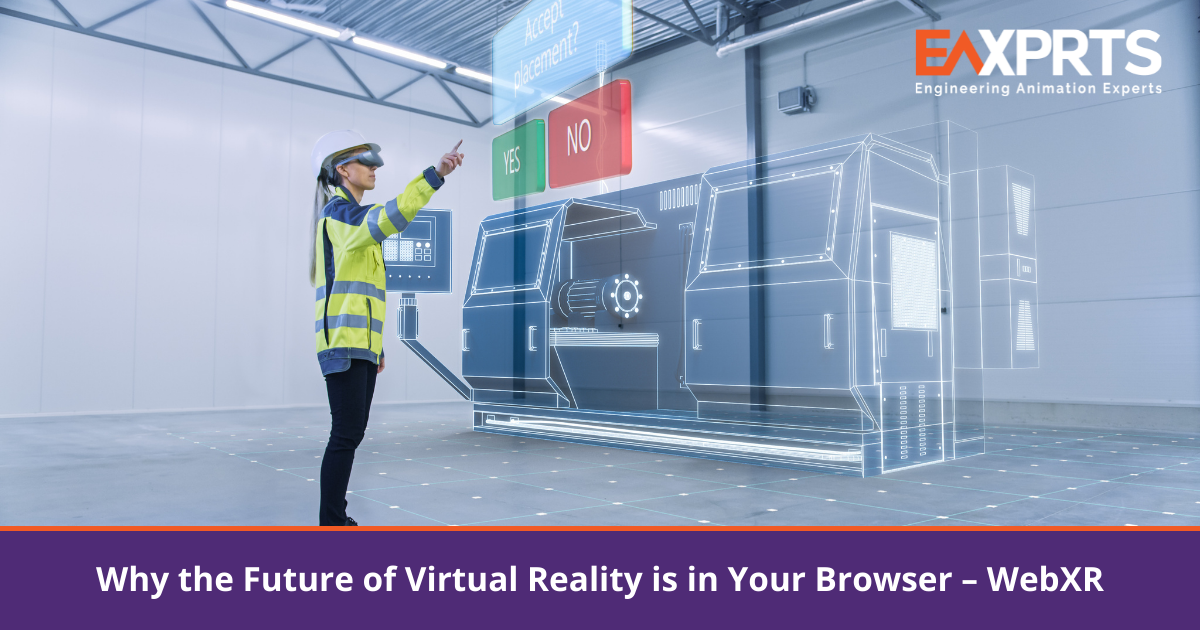
The Complete Guide to Augmented Reality and How it’s Changing Marketing & Advertising
May 16, 2022
The Complete Guide to WebXR Extended Reality Experiences and How They are Changing the Game of Marketing
May 3, 2023Virtual Reality (VR), which has been in the making since the early 1950s, is a revolutionary technology that opened up a new world of possibilities where imagination can actually run riot and transport the viewer to a world of dreams. While the world of entertainment was first off the mark to exploit the possibilities of VR with a myriad of games, the technology has immense potential in various other fields like engineering, architecture and buildings, medical, education, marketing and much else. Augmented Reality (AR), a later development, blended VR with the real world, and Mixed Reality (MR) offered an experience of both with interactive features. Finally, it took the simplicity of WebXR to bring these technologies together and democratize the medium for the masses, through a browser.
What is WebXR, How Different is it from VR and AR
WebXR, introduced in 2018, is the new application programming interface (API) standard that superseded the WebVR API for web content development in 3D. In doing so, it simplified the field for developers to create immersive experiences for browser-based viewing without worrying about the different devices and requirements. The XR stands for Extended Reality, an umbrella term that covers all other realities – Virtual, Augmented and Mixed.
Virtual Reality or VR is a computer-generated virtual environment in which the viewer is immersed and can interact with the scene as part of it, though nothing is real, just a simulation. Used basically for games and entertainment experiences like films and sports, it also has applications in training and medical fields. VR relies on PC and a headset for the experience but now standalone VR devices are also available. The VR experience may cause disorientation in the viewer for some time.
In Augmented Reality or AR, digital content is overlaid on actual objects or machines, buildings, etc., in the form of text, sound or graphics. The viewer can interact with the scene by pointing out the smartphone or tablet camera on it. However, the data thus overlaid must be mapped beforehand and all the information made available in digital format in the cloud, from where it is recalled through computer vision once the camera points at those objects, machines or buildings.
Since WebXR combines all the three immersive experiences, at the lower end of the spectrum it is more of AR; and at the higher end, more of VR. In the mid range the experience is mixed, combining VR and AR.
Why WebXR Is Important to You
The importance of WebXR lies in the compatibility – the fact that it is browser-based and combines all immersive experiences – VR, AR and MR. While niche and highly specialised applications may still prefer VR or AR, the simplicity of WebXR is more suitable to general applications and has a wider appeal, especially as it does not need any other device – a smartphone or tablet is enough to experience WebXR. The fact that WebXR makes 3D animation widely accessible to the masses is perhaps its biggest plus point. All these advantages make WebXR important to various businesses to connect with their customers. Online shopping portals make use of WebXR to attract customers who can visit their virtual showrooms and try out stuff – apparel, gadgets and gizmos. For industrial users, WebXR offered various tools like marketing presentations, virtual trade fairs and training sessions by remote.
How WebXR Works & What Can It Do?
As mentioned earlier, WebXR Device API allows the creation of web browser-based 3D, Virtual Reality (VR) and Augmented Reality (AR) experiences on the web, so basically it is a facilitator that provides access to input and output capabilities from AR and VR devices. The applications can be experienced through browsers that support WebXR, either standalone, or PC-connected VR headsets, AR headsets, and on mobile devices with or without headsets. At the most basic level, what WebXR does is find compatible VR/AR output devices and then renders the 3D scene at the appropriate frame rate, adjusting to both the eyes of the viewers by computing the exact position of each eye and presenting the image in a single frame.
As for what WebXR can do, it offers a whole new vista of opportunities to businesses for which technology was a barrier in terms of cost and complexity – the hardware was expensive and the software, too complex. Viewers do not have to download any app or plug in any external device – anyone with a smartphone can use WebXR. So businesses can now create immersive experiences for their consumers with content specifically developed to engage them for sales promotion and marketing. These immersive experiences can treat the viewers to new products, show them the working of complex machines, or entertain them with previews of events and places they would want to visit physically. The possibilities are limitless.
Best Practices for Creating WebXR Experiences
Immersive reality experiences – despite the simplicity of WebXR – are not easy to create. The entertainment industry has vast budgets and infinite resources to create games that appeal to the masses and rake in the profits. That is not true for the average business with several limitations, so here are a few tips:
- Identify the content: Immersive experiences do not suit every website or within the website, all content. So one must carefully select the content rather than use the technology indiscriminately.
- Get the right skills: Switching from 2D to 3D content takes more than knowledge of web applications. Creating immersive experiences is more like developing a video game and needs appropriately skilled persons.
- Check the samples: It is still early days for WebXR and not many use cases pertaining to a specific business area are available. Check samples and demo experiences from various sources before developing the content.
- Understand the audience: Decide what exactly the audience is and how the majority is going to access the content – the hardware part is crucial to understand and the content tailored to suit the best experience.
- Avoid over engineering: Keep things simple and optimize the content to be the best possible level in small size files easy to download. Waiting is something nobody likes as there are always better things to do.
The Future of WebVR and How the Skilled Community Will Fuel its Evolution
The short answer to any question about the future of WebVR would be ‘Great’. The technology that has been evolving over the last seven decades, albeit very slowly in the first five, has now achieved critical mass to propel forward. It has already come out of the confines of the games and entertainment industry and become mainstream in commercial and industrial applications. WebXR has taken it to the masses. The young generation today is living double lives – real and digital – and the talk of Metaverse is incomplete without Virtual Reality applications.
Here are a few trends that will shape WebVR in the near future:
- VR is an artificial creation that tricks the brain into believing it is real with sight and sound as the dominant senses participating in the experience. Touch and odour, already part of niche applications, would become common, making the experience even more immersive. In fact, Ericsson predicts that by 2030, one will be able to enter digital environments and experience all five senses simultaneously.
- The growing popularity of online shopping with virtual tours of malls and virtual walk-through aisles would become compelling enough to put an end to physical visit. Instant deliveries through strategically located warehouses would become a norm, with real time tracking of the movement.
- VR is already in use in education, boosted by the pandemic and a large number of start-ups are engaged in refining this experience further, with device makers matching their effort by providing more affordable and less cumbersome headsets. Disciplines like engineering, medical and architecture students shall find VR very useful in training.
- The Simultaneous Localization And Mapping (SLAM) technology that instantly translates data from the real world to virtual and vice-versa through use of sensors will further enhance the Metaverse and facilitate rapid adoption of autonomous cars with total control over its movement as well as maintenance issues.
- Industry will benefit greatly by inducting trainees to the shop floor in a virtual environment first to familiarise them with complex machinery, and in process industry like mining and oil & gas that operate in hazardous environments.
Conclusion
Metaphorically speaking, the world of virtual reality has just scratched the surface and the real thing is yet to come. Continuous evolution, especially in the hardware, will make things better. Headsets and glasses today are not exactly cheap, nor comfortable to use. Users often feel disoriented, and many find the experience highly unpleasant. But with the rapid developments in the field, plus all the features and benefits of the technology enumerated in the preceding paragraphs make it amply clear that immersive experience is the future, bridging the gap between the real and digital universe.
Talk to us today! Reach us on sales@eaxprts.com



